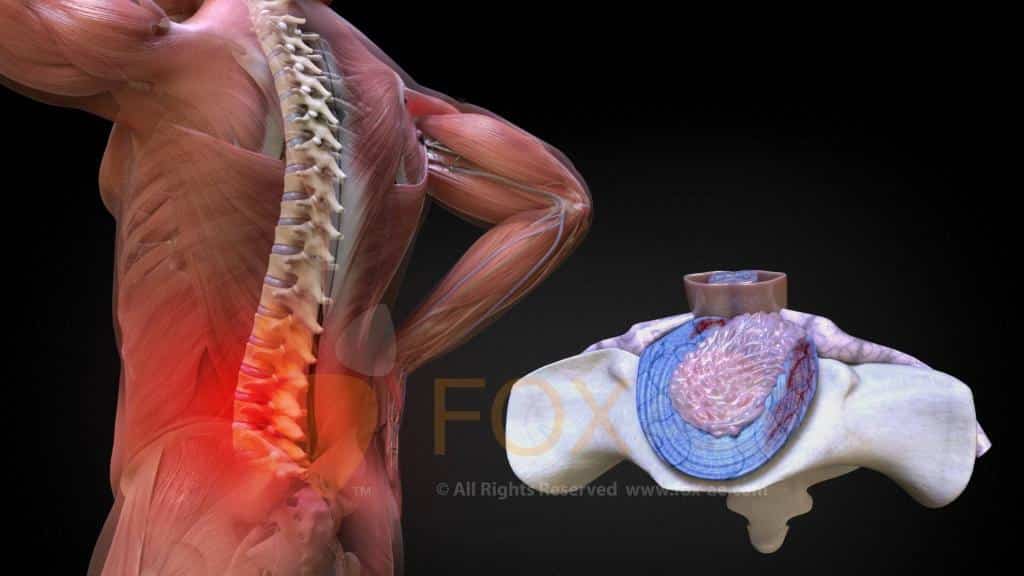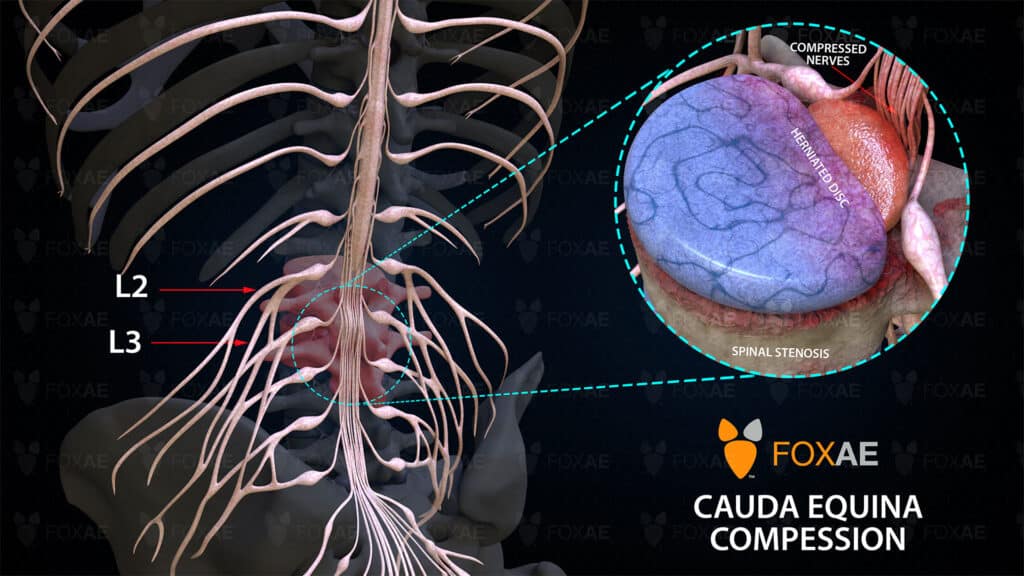Cauda equina is a group of nerves at the base of the spine that affects the legs and bladder. They send and receive electrical signals to and from the legs, feet, and pelvic organs. The cauda equina nerves allow one to move and experience feelings in the legs and bladder. When several lumbar and sacral nerve roots of the cauda equina become dysfunctional, a condition known as cauda equina syndrome (CES) develops.
Hence, CES is the compression of the nerve roots called cauda equina.
CES is a rare emergency disorder estimated to affect 1 in 33,000 to 100,000 people.
A variety of symptoms are present with CES. The severity of which is dependent on the level of compression and the specific nerve roots that are being compressed.
Patients with CES may experience pain, weakness, urinary retention, fecal incontinence, and sexual dysfunction.
If this illness is not addressed, it may result in irreversible harm, including paralysis. On the other hand, a prompt diagnosis and treatment could avoid serious injuries like paralysis.
What Are The Causes Of Cauda Equina Syndrome?
There are several causes of cauda equina. However, the most common two will be considered.
Lumbar Herniated Disc
A lumbar herniated disc is the most frequent cause of nerve compression leading to cauda equina syndrome.
A disk acts as a cushion between the vertebral bones. It is composed of a hard surface and a jelly-like interior.
A herniated disk happens when the soft jelly-like interior of the disk pushes through the tough outer layer. The strength of disk material declines with age. Lifting something heavy or merely bending the incorrect way can stretch a disk to rupture if the wear and tear are severe enough.
Nerves close to the disk may become inflamed when this occurs. In addition, the cauda equina may be pushed against if the disk rupture in your lower lumbar region is significant enough.
This was the cause in the case of Hanson v. Penrod Const. Co. In that case, the plaintiff suffered a lumbar herniated disc after slipping at work. The herniated disc resulted in cauda equina syndrome, which made him lose control of his bowel and bladder.

Postoperative Complications
CES can occur as a result of a postoperative complication. For example, this might arise because of damaged blood vessels, blood clots, cerebral spinal fluid leaks, swelling around the nerve roots, and many more.
It is essential to know that postoperative CES may be an accepted risk of surgeries such as spinal surgery. In such an instance, the patient might be unable to bring a successful claim against the surgeon.
Let’s consider the case of White v. Vanderbilt University. In this case, the plaintiff underwent spinal surgery. After the surgery, she started experiencing lower back pains, which she reported to her doctor. He always dismissed her as usual and gave her just painkillers. The pains, however, became severe. When the doctor examined her and ran tests, it was found that she had CES.
Although this is a known risk of spinal surgery, the plaintiff’s case was successful because she had suffered irreparable damage due to the delay in diagnosis.
Misdiagnosis Of Cauda Equina Syndrome
CES is a severe disorder that needs emergency treatment to avoid permanent harm. Therefore, most CES cases involve a delay in diagnosis.
When a patient exhibits one or more cauda equina syndrome symptoms, the attending physician must do a thorough medical workup. A thorough physical examination is followed by the collection of a comprehensive medical history.
Doctors and hospitals must take every precaution to avoid a misdiagnosis and correctly diagnose the ailment because there is a considerable danger of paralysis and other complications. Radiology tests such as a CT scan or MRI should be used to confirm a diagnosis. If cauda equina syndrome is found, the patient needs urgent surgery to prevent long-term damage.
If the MRI reveals the issue, it is essential to refer the patient right away to an orthopedic or neurosurgeon so that surgery may begin before the patient suffers long-term harm.
It is essential to have the decompressive surgery within 48 hours after diagnosis.
CES malpractice claims occur when healthcare professionals who ought to be able to recognize cauda equina syndrome fail.
It can also occur where a radiologist who misread the MRI is facing cauda equina malpractice charges.
In the case of Kwasny v. Feinberg, the plaintiff, on 27 occasions, complained to the defendant about the constant back pains she experienced. On all those occasions, he gave her chiropractic treatment without conducting tests.
After a long time of living with cauda equina syndrome, she started developing permanent damage. The damages include vaginal numbness and inability to urinate or defecate. The court ruled in favor of the plaintiff of $500,000 as compensation.

The Use Of Medical Animation To Illustrate the Dire Consequences of CES
CES is a rare yet debilitating condition. As stated earlier, when CES is discovered and treated early, the most severe effects of it, such as paralysis, can be avoided. However, irreversible injury frequently happens when the diagnostic and surgical process is unduly delayed.
When this occurs, a patient who has been permanently injured by cauda equina syndrome malpractice may be entitled to compensation.
However, in proving the liability of the surgeon or doctor, a victim may face certain challenges.
The first challenge a victim will face is conveying important complex terms to the jury. The victim may also face the challenge of proving the injury suffered resulted from the delayed diagnosis and treatment of cauda equina syndrome.
The best solution to these problems is the use of medical animation.
Medical animation is a visual aid that strengthens the stance of the expert witness and makes it possible for a jury to understand complex medical and legal terms.
In cases where the MRI result was misread, medical animation can show the gross negligence of the radiologist and how the outcome would have been different if that mistake was not made.
Moreover, in cases of delay in diagnosis and treatment, as exemplified above, animation can show the dire consequences of the delay in diagnosis. It could also illustrate how this delay has resulted in pulled-up medical bills, loss of productivity, etc. Thereby giving a victim a higher chance of getting commensurate compensation.
Conclusion
Creating a demonstrative exhibit for a condition like CES requires deep expertise. At Fox-AE, we poses such qualities as we have created Cauda Equina Syndrome demonstratives amongst other spinal herniation exhibits.
We ensure we collaborate with attorneys and expert witnesses on a case to ensure that we create admissible demonstrative exhibits






